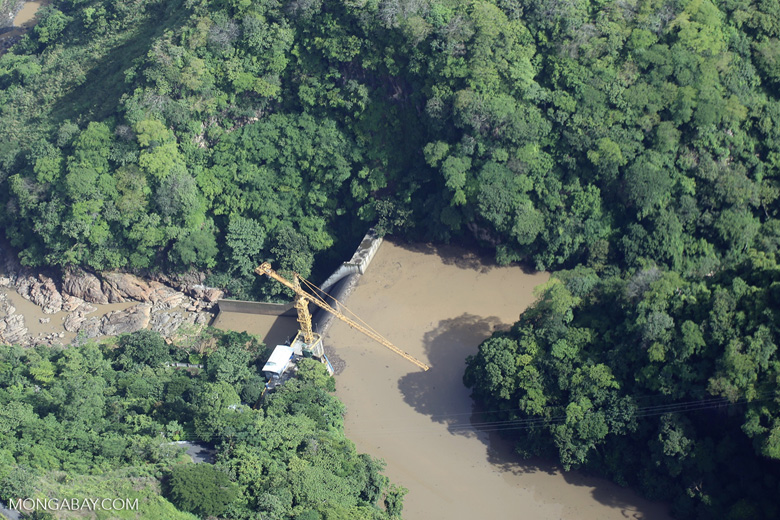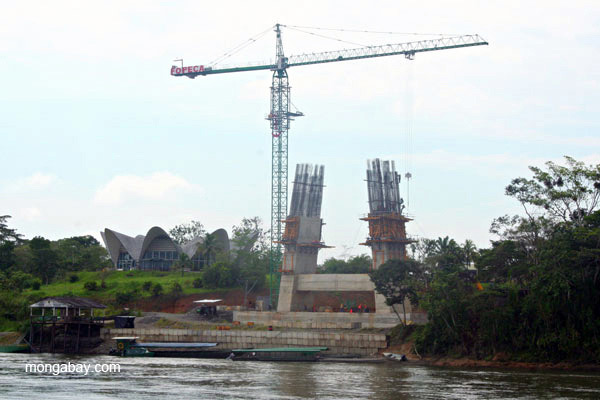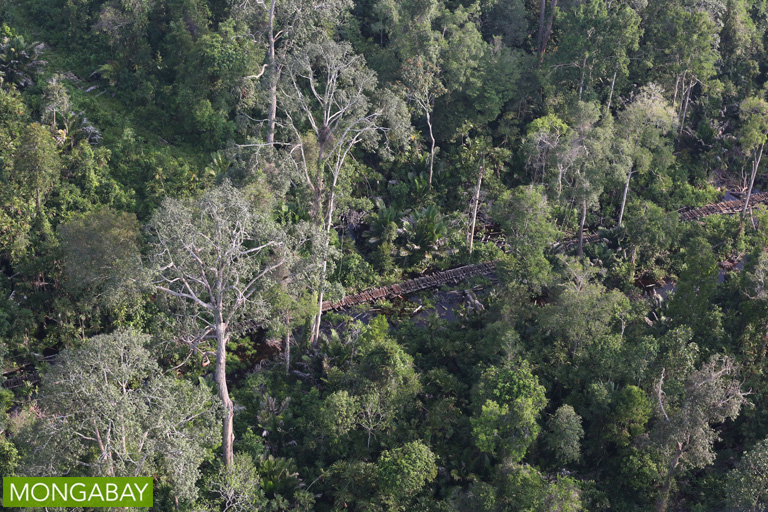The Battle for the Amazon: Amazon Infrastructure SRP
Plans currently call for more than 400 new hydroelectric dams on the rivers of the Amazon basin and on its headwaters tributaries — projects that would block the region’s free-flowing streams and lead to major deforestation, habitat loss and degradation, and possible ecosystem collapse. This includes hydroelectric projects in Brazil (256 dams), Peru (77 dams), Ecuador (55 dams) Bolivia (14 dams), and Colombia (1 dam).
With this dam building frenzy would come accompanying infrastructure: roads, railways, industrial waterways, transmission lines, new mining operations, agribusiness expansion, logging and settlement, which would result in significant harm to ecosystems and biodiversity, as well as having negative impacts on local indigenous and traditional communities.
The public has been told very little about the immediate and long-term threats these hydropower and other infrastructure projects present to Amazonia’s forests, wildlife, terrestrial and aquatic environment. The public has been even less informed regarding project financing by the international investment community.

Mongabay is looking for article pitches that detail the wide-ranging environmental impacts of hydropower development and ancillary infrastructure development in Amazonia, with a special emphasis on dam building projects in Bolivia, Peru, Ecuador, Colombia, and Brazil (Tapajós basin and elsewhere).
We’re also interested in stories focusing on the international financing of Amazon energy development by Chinese (Export-Import Bank of China, etc.), European and US financial institutions and construction companies; as well as Latin American investors including BNDES, the Inter-American Development Bank, Latin America Development Bank, etc., plus major construction companies (Brazil’s Four Sisters, etc.).
We welcome proposals from experienced journalists for single Amazon Infrastructure articles, or for a series of articles on a particular environmental or energy investment topic. We welcome original pitches on any Amazon Infrastructure issue, and here are some suggested topics:
Environmental Impacts:
- Terrestrial ecosystem impacts of particular/multiple dams – deforestation, habitat loss, ecosystem destruction, etc.
- Aquatic ecosystem impacts particular/multiple dams – fish migrations and connectivity, diminished nutrient flow, fluctuating water levels, endangered species, fisheries, etc.
- Threats to animals – charismatic wildlife, endangered species, endemic species, etc.
- Threats to plants – forest types, trees, valued medicinal plants, endangered species, etc.
- Scientist profiles – cutting edge researchers of Amazon dam environmental impacts
- Tracking environmental record of Odebrecht and other key dam construction companies
- Neotropical dams and carbon emissions and climate treaty ramifications
- Alternatives to large hydro dams in Amazonia (low impact energy development)
- Other environmental impacts – illegal logging; deforestation; cropland, ranching and mining expansion resulting from improved access/energy production; industrial waterway development; road/rail construction; cement making; transmission lines; etc.
Finance and Energy Development:
- Regional dam financing institutions – Focus on one or more major regional investors in Amazon infrastructure projects, such as BNDES, Inter-American Development Bank, Latin America Development Bank, etc.
- International Dam funding mechanisms – United Nations development programs, IPCC, CDM, carbon credits, Global Environment Facility (GEF) projects, etc.
- China connections – financial institutions and construction companies including China Export-Import Bank (China Exim Bank), China Development Bank, Sinohydro, Three Gorges Corporation, etc. Focus on one or more dam projects.
- Hydropower and transportation — Who is backing industrial waterways, rail and road projects, including major commodities companies (Cargill, Bunge, Amaggi, etc.).
- Hydropower and mining — What mining companies stand to benefit most from Amazon hydro energy development.
- Big winners / losers – Large-scale agribusiness, energy, investment vs. small-scale farmers, fishermen, local riverside communities, etc.
- Neotropical dam international funding and greenhouse gas emissions from dams
Social Impacts and Resistance:
- Impacts to riverside indigenous and traditional communities by one or more dams
- NGO response and resistance
- Indigenous / traditional people response, especially innovative forms of resistance
Miscellaneous:
- Focus on overall impacts of particular dam(s)
- Focus on multiple dam impacts to particular tributaries
- Focus on multiple dam impacts to particular watersheds / regions
- Analysis of how alternative energy development could do away with need for dams

Series details
Mongabay will negotiate all fees and contracts on a per-story basis. Completed stories will be paid per word, depending on journalist’s experience and complexity of the reporting. Stories will be published on Mongabay.com and its Spanish language site Mongabay Latam, under an open Creative Commons license that allows for sharing and re-posting. We will also offer a small payment to journalists who proactively get their stories republished in major third-party print media outlets and on sites that draw more than 100,000 unique visitors per month, with an emphasis on articles published in Portuguese/Spanish with major Latin American media outlets. We are especially looking for writers able to write bilingual stories, and with contacts in international print and online media.
Small sums are available to help defray travel costs, mostly within the Amazon basin and headwaters region. However, some international travel funds may be offered to those who can guarantee advance article placement with major global media outlets.
Article length / photos:
Each story will be approximately 800 to 2,000 words in length. Stories will be paid on a per word basis, up to a maximum of 2,000 words. They will include quotes from at least 3 or 4 original interviews obtained either in person or via email, phone or skype. Authors will be expected to hunt down 5-10 publishable photos to accompany their articles (likely provided by those interviewed, or found free of copyright restrictions online). All articles need to include a list of numbered pictures with numbered captions and photo credits.
Send us your pitch, or pitches — Please submit your pitch here. Pitches should be roughly 500 words long for each proposed story, and summarize the article(s) you wish to write, telling why this is an important and relevant topic, saying who you will be interviewing, and list some research sources. We’ll also need you to submit your journalism resume and clips. Applications can be submitted in English or Spanish.

We look forward to hearing from you!
Consulte esta oportunidad y envíe su propuesta en español aquí.